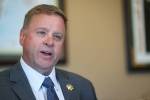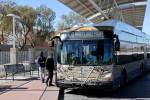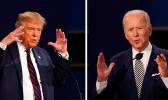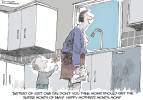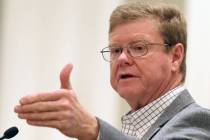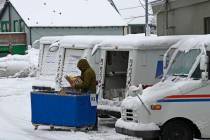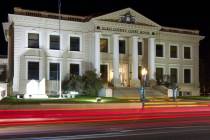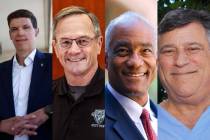Economist defends Sandoval’s job creation figure
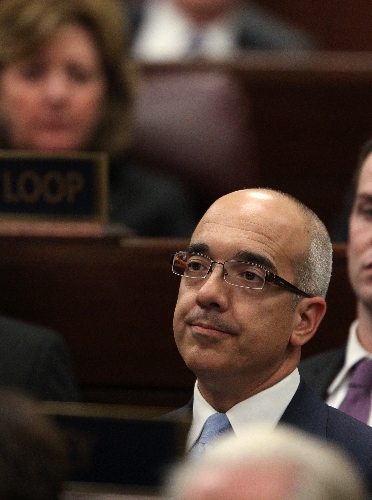
CARSON CITY – The state chief’s economist defended Gov. Brian Sandoval’s assertion that 30,000 new jobs have been created during his administration, although the actual job gain in Nevada is at least 8,000 lower than that figure.
In his State of the State address Wednesday, Sandoval spoke of 30,000 jobs being created in his first two years in office. Economist Bill Anderson said Thursday that 29,000 private jobs have been created in the governor’s term but conceded that 7,000 jobs have been lost in public sector or government employment. That leaves a net gain of 22,000 jobs.
Anderson added that his Department of Employment, Training and Rehabilitation agency would have no part in trying to deceive the public.
While hesitating to criticize Sandoval, both Senate Majority Leader Mo Denis, D-Las Vegas, and a financial expert familiar with the Nevada economy said Thursday that the governor should have mentioned the lower net job gain figure.
“Everybody looks at numbers in different ways,” Denis said. “I think ‘deception’ on his part is too strong of a word. But if you are going to mention the job gains, you also should mention the losses. If we are going to make solutions, everybody needs to understand the full ramification of what is going on. Otherwise, people will say ‘Oh that is not too bad.’ ”
In his own speech on behalf of legislative Democrats on Wednesday, Denis said 20,000 jobs had been created in the past year in Nevada, but Utah gained 41,000 jobs and other states many more. He said his source was the U.S. Labor Department.
An expert in state financial matters said he immediately questioned the figures Sandoval mentioned in his Wednesday speech and went to a state Department of Employment, Rehabilitation and Training website.
He compared the total Nevada employment figures in November 2010 with the most recent figures, those for November 2012. They show Nevada had a net gain of 19,758 jobs over the two years.
“The governor was not invalid about the 30,000 figure, but government is an employer as well as the RJ,” said the expert who requested anonymity. “I do it both ways.”
In a interview with the Review-Journal a few weeks ago, Anderson talked about overall job gain in the 20,000 to 25,000 range in the past two years but said that could change after additional analysis of 2012 job figures.
He also noted the net effect of private job gains and public job losses. The economist makes official state comments each month when unemployment rates are released.
In that interview, Anderson also said there are 162,500 fewer Nevadans working than during the peak employment time in early 2008.
Because fewer people are seeking jobs or have left the state, the unemployment rate has dropped from its peak of more than 14 percent to the current 10.8 percent.
“There are jobs being created now,” Anderson said Thursday, contending his projections show that about 15,000 jobs will be created each year over the next two years.
A close look at the governor’s speech shows he spoke of “Nevada businesses” and “Nevada employers” creating the new jobs – and not of the public sector, or governments, cutting their workforce.
Gerald Gardner, Sandoval’s chief of staff, said Anderson will be releasing more information today on Nevada’s job gains and losses. He said economists keep two indicators, one on job creation and another on job losses.
“It is strictly a factor of how the numbers are reported,” Gardner said. “The issue of job growth is very significant. There are 30,000 new jobs. There is always a natural attrition of jobs.”
The expert interviewed by the Review-Journal agreed with Gardner and acknowledged that he keeps the two job indicators in his business but added he also reports the net effect of jobs created and jobs lost.
Contact Capital Bureau Chief Ed Vogel at evogel@reviewjournal.com or 775-687-3901.



